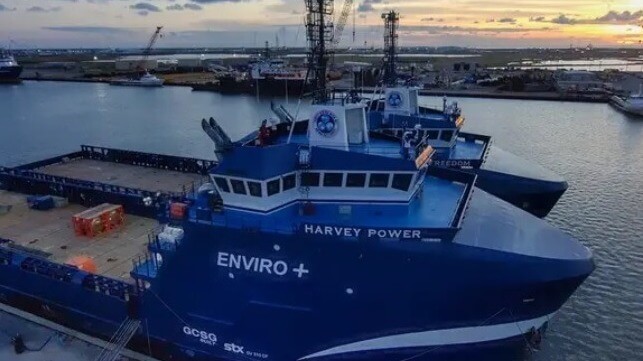Exhaust Data Yields New Insights Into Fuel Efficiency and Emissions

CO2 emissions can be estimated from fuel consumption, and all shipowners will have to do so to comply with IMO CII regulations starting next year. But what if you could measure actual emissions, not just for CO2 but for all other pollutants? After all, CO2 isn't the only thing coming out of the stack: partial combustion products like soot and carbon monoxide make up a good share of the total. That share varies over time, and it tells a valuable story about engine condition and fuel efficiency, according to Jacob Ruytenbeek, CEO of emissions-monitoring startup Sailplan.
For the shipowner, there is a business case for capturing this data. Every unburned molecule that goes up the stack represents energy (and money) wasted. If those emissions can be monitored in real time and the underlying causes communicated to the crew, the captain and the chief engineer can make changes to improve fuel economy. That means real savings, especially when fuel costs are as high as they are today. "We're typically finding upwards of two percent of fuel being just wasted, not even burnt and consumed by that engine. And ship operators using Sailplan can control that," says Ruytenbeek. "After a $65,000 installation, we usually see about $700,000 back from fuel consumption savings and improved maintenance."
The system also offers a new view into emissions that impact human health and the natural environment - like carbon monoxide, NOx, SOx, particulate matter, propane and methane. For LNG-fueled vessels in particular, methane emissions are an important part of the story.
Methane is a powerful greenhouse gas, and the release of unburned methane out of the stack offsets the climate benefits of running a vessel on natural gas. Sailplan can track methane just as well as any other pollutant and can advise the crew on how to reduce it. "We've seen data today that is quite promising. With something like our system on board, methane slip can almost be fully eliminated," says Ruytenbeek. "We're able to detect methane slip when it's occurring, identify the conditions, and alert the operators to make plant reconfigurations to get rid of it."
A comprehensive emissions monitoring approach can also work for seaports, says Ruytenbeek. His firm recently completed installation of an emissions sensor array for Port Fourchon, Louisiana, the home of the Gulf of Mexico's offshore oil and gas industry. By detecting minute changes in the concentration of CO2 and other pollutants in the air, the system can determine the emissions from port operations in real time, without requiring sensors on each individual piece of equipment in the yard.
With this new information in hand, ports, shipowners and policymakers may find that they have to rethink some basic assumptions. For example, slow steaming may result in emissions with health and climate impacts of their own, even if CO2 per tonne-mile is reduced.
"Slow steaming means low-load operation, and it generates a lot of particulate matter and a lot of unburnt hydrocarbons. So what we may be doing through policy choices like this is incentivizing the generation of methane, propane and particulate matter - which we all breathe in near shore - instead of CO2," says Ruytenbeek.
